Economists Paint Rosy Forecast for Trucking
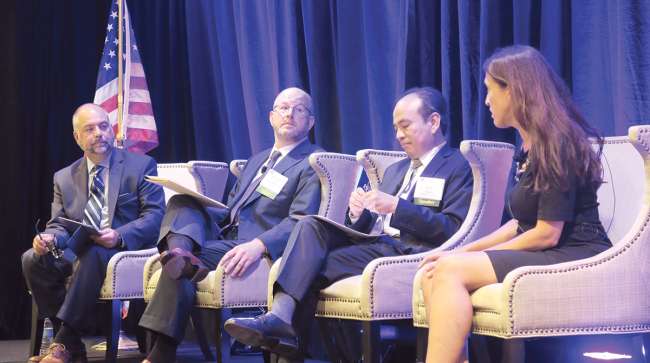
WASHINGTON — Economists for trade associations representing manufacturing, construction and retail industries said during an industry conference here that they expect positive growth to continue for the remainder of 2018, with little chance of a downturn over the next year or so despite the threat of increasing trade tensions, rising interest rates and higher costs.
For trucking, that means a continuation of strong demand for freight hauling and a business environment marked by tight capacity and favorable rates.
Bob Costello, chief economist for American Trucking Associations and host for the ATA Economic Summit, held Sept. 5-6, provided his own, more modest, forecast for a slowdown in growth as benefits from federal tax cuts wear off while consumer and business spending levels off.
“This could be the peak,” Costello said in reference to estimates for growth in the U.S. Gross Domestic Product of more than 3% in the second quarter of 2018. “Next year could be closer to 2%.”
Still, Costello said he sees nothing that could derail the current economic expansion, which is already the longest in modern times.
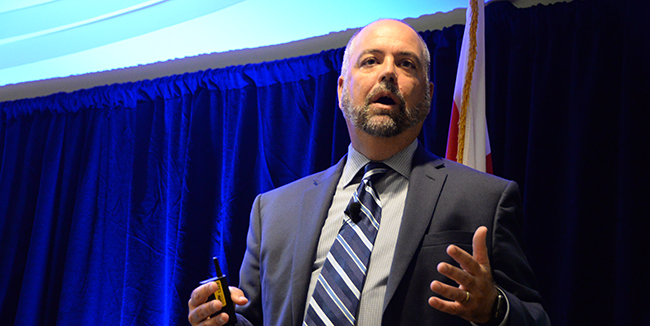
Costello (Jaclyn O'Laughlin)
Other speakers also made the case for continued economic growth.
“Our members are really happy,” said Chad Moutray, chief economist for the National Association of Manufacturers, who noted that 95.1% of member firms surveyed in the second quarter of 2018 were optimistic about their business. That positive outlook is driven by increased demand for manufactured products, reduced taxes and regulatory changes.
A surge in U.S. energy production is another factor driving growth in manufacturing, Moutray said.
Production of low-cost natural gas from fracking activities is driving growth in production of petrochemicals and is expected to generate demand for 1.8 million additional chemical shipments over the next two years, said Emily Sanchez, director of economics and data analytics for the American Chemistry Council.
“Companies are using the U.S. as platform to export to the rest of the world,” Sanchez noted.
Timothy Gill, chief economist for the American Iron and Steel Institute, said he expects U.S. steel production to increase 4% this year, helped by the imposition of tariffs on foreign-made steel.
Increased spending on highways and bridges could boost further demand for steel, but Gill noted that it’s still unclear how much money will be available from public and private sources to fund infrastructure projects.
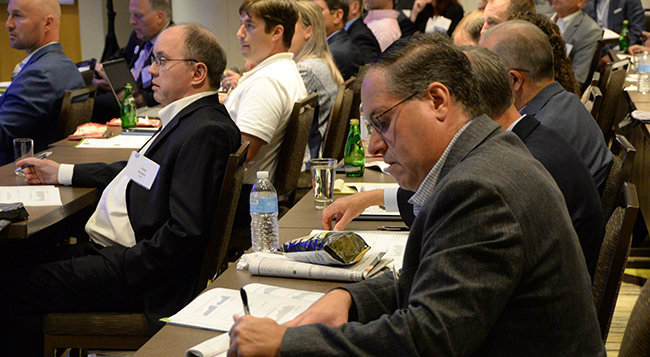
Conference attendees listen diligently. (Jaclyn O'Laughlin)
Automotive production has remained strong, said Patrick Manzi, senior economist for the National Automobile Dealers Association, which forecasts sales of 17 million new vehicles in 2018, down slightly from the peak of 17.5 million units in 2016. He expects sales to dip to 16.7 million in 2019 and 16.6 million in 2020 as higher prices and interest rates lift vehicle prices. Tariffs on imported cars also could negatively impact sales and employment in the automotive sector, he said.
Construction has been an economic bright spot in the past year, and contractors are struggling to hire enough skilled workers to keep up with demand for commercial and residential projects, said Ken Simonson, chief economist for the Associated General Contractors of America.
Overall, Simonson said he expects a 3% increase in nonresidential construction spending in 2018, led by transportation and lodging projects.
“It’s been a roller coaster,” Simonson said of the construction sector since the recession in 2008-09.
Regarding residential building, Robert Dietz, senior vice president and chief economist for the National Association of Home Builders, said he expects demand to increase for single-family homes as more people leave rental units. The trend faces headwinds, however, as increases in home prices and interest rates make home purchases less affordable.
Retail represents freight haulers’ largest sector and there are signs that growth is accelerating here as well, according to representatives from the U.S. Chamber of Commerce, National Retail Federation and Consumer Technology Association.
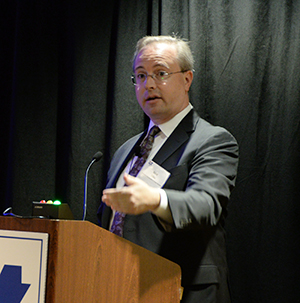
Dietz (Jaclyn O'Laughlin)
“Since 2016, retail has grown faster than the rate of GDP,” said Katherine Cullen, director of industry and consumer insights for NRF, adding that retail sales in 2018 will increase at least 4.5%.
Shawn DuBravac, chief economist for the Consumer Technology Association, said e-commerce’s share of retail sales is continuing to climb. He estimated 15.8% of retail purchases will be made online in 2018 and will reach 21% in 2022.
The shift has consequences for trucking. “When you reach the 20% threshold, companies begin to structure their operations around it,” DuBravac noted. “We’ve seen it in electronics already.”
For trucking, Costello said he expects tight capacity to persist despite record orders for new equipment. And while tractor purchases are overwhelmingly for replacement, not expansion, Costello noted that recent data show some increase in company-owned equipment offset by a decline in the number of owner-operator tractors in service.
Part of the explanation for these divergent trends, Costello said, is that some owner-operators are crossing over to become company drivers, attracted perhaps by higher pay and new equipment.
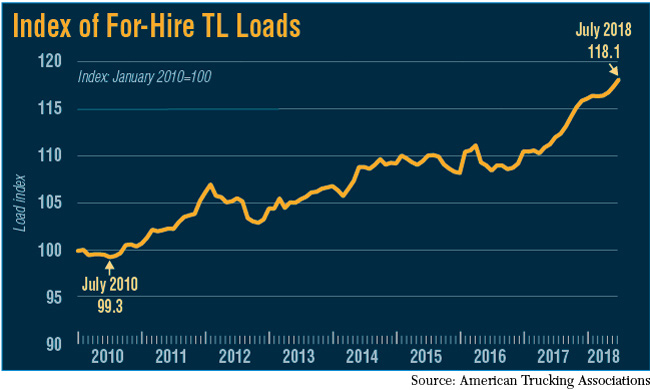
ATA also released its long-term freight forecast, projecting a 35.6% increase in tonnage from 16 billion tons in 2018 to 21.7 billion tons in 2029.
Revenue associated with truck transport is projected at $759 billion in 2018 and reaching $1.02 trillion by 2024, an increase of 4.9% per year on average.
Total truck tonnage hit 10.77 billion tons in 2017, the highest level on record and was up 26.4% from the low in 2009.
Over the next decade, freight transportation revenue is forecast to grow 91.4% to $1.69 trillion.




